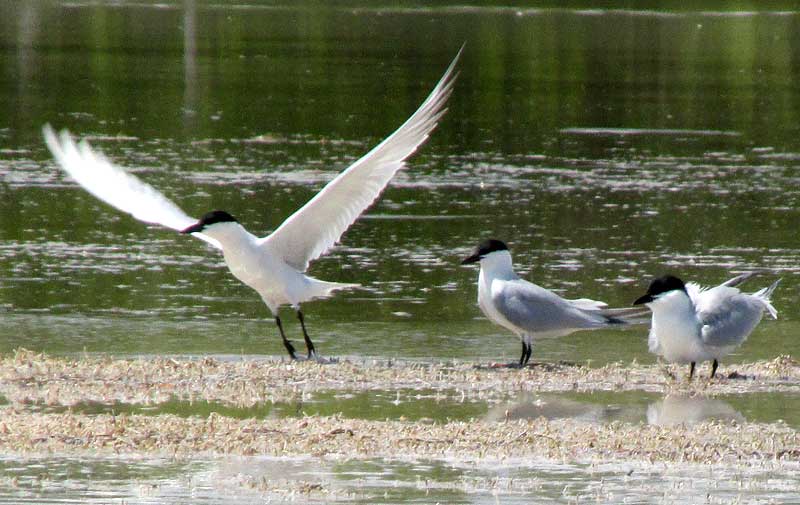Excerpts from Jim Conrad's
Naturalist Newsletter

from the May 10, 2015 Newsletter issued from Río Lagartos, on the Yucatan Peninsula's northern coast (~N21.60°, ~W88.16°), Yucatán state, MÉXICO
GULL-BILLED TERNS
Out in the estuary when you see large flocks of birds lounging on sandbars, wading in shallows or floating on the surface, it's always a good idea to scan each bird because you may have a mixed flock with a rare or otherwise interesting species mingling among the regulars. That was the case this week with several small terns foraging atop some Widgeongrass exposed at low tide. Mainly there were Forster's Terns out that day, but something about some of them just didn't seem right. Those are the oddballs above.
Forster's Terns have orangish legs, and the small tern we often see, Sandwich Terns, have yellow-tipped beaks, but these terns have all-black beaks and legs. They're Gull-billed Terns, GELOCHELIDON NILOTICA, which are winter residents on the Yucatan's coasts, but seldom seen here.
Most terns are members of the genus Sterna, and often Gull-billed Terns are assigned to that genus, but nowadays most experts assign them to their own one-species genus, Gelochelidon. That's because Gull-billed Terns are so un-tern-like. For one thing, their beaks are shorter and thicker than other terns'-- like a gull's beak. Also, Gull-billed Terns rarely dive the way other terns do, but rather hawk for insects over marshes as if they were swallows or nighthawks. Their flight also is more gull-like than other terns'.
However, there's no doubt about Gull-billed Terns being terns and not gulls, because their beaks are sharp-pointed, like other terns, and not hooked, like a gull's.